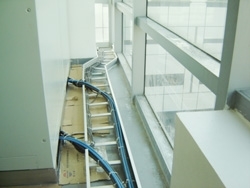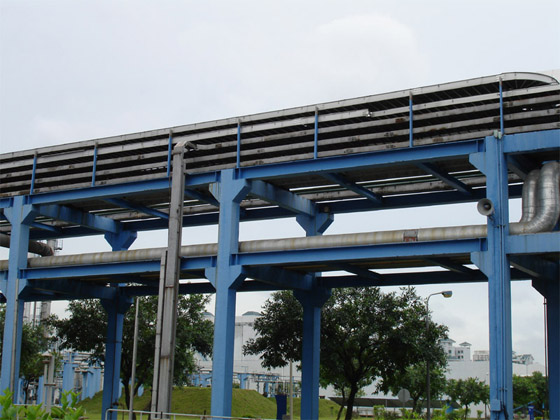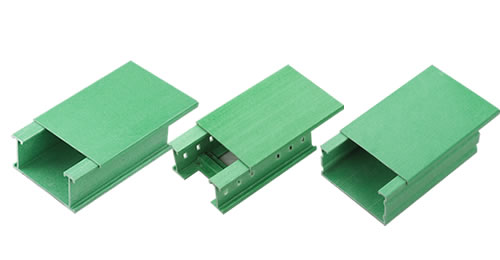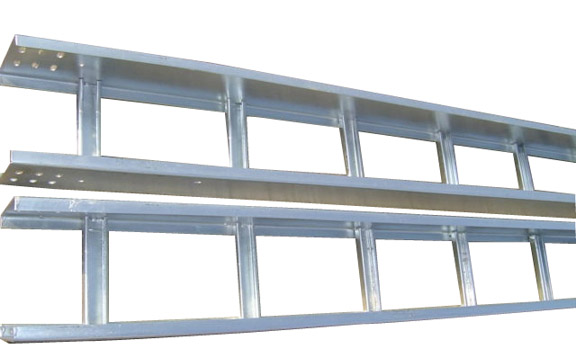橋架的載荷特性是什么?有什么作用?
橋架由通道電纜托盤、托盤和級聯電纜托盤、網格托盤等結構組成,包括支架、支架、安裝附件等。可以獨立假設,也可以放在各種建筑(結構)建筑物和管道支架上,表現出結構簡單、形狀美觀、配置靈活、維修方便等特點。所有部件都要鍍鋅,并安裝在建筑物外的露天托盤上。如果屬于附近海灘或腐蝕地區,材料必須有防腐、潮濕、附著力。
The bridge is composed of channel cable trays, trays, cascaded cable trays, grid trays, and other structures, including brackets, brackets, installation accessories, etc. It can be independently assumed or placed on various building (structural) structures and pipeline supports, exhibiting characteristics such as simple structure, beautiful shape, flexible configuration, and easy maintenance. All components must be galvanized and installed on outdoor pallets outside the building. If it belongs to a nearby beach or corrosive area, the material must have anti-corrosion, moisture resistance, and adhesion.
1、電纜橋架負荷
1. Cable tray load
電纜橋架上的載荷分為靜態、動態和附加載荷。
The load on cable trays is divided into static, dynamic, and additional loads.
靜態負載是在電纜托盤中布線的電纜類型、布線數、每個外徑的重量/單位長度,并根據電纜布線單獨列出。動態載荷是電纜橋架安裝和維護過程中施工修理工的重量。對于輕型電纜橋架,通常不考慮移動載荷。也就是說,不允許站在托盤上的人(行)。如果需要考慮逆向因素,則應適當縮小跨度。追加重是僅在室外由冰雪、風、電磁力形成的載荷,與安裝地點的區域自然氣象條件及電荷體的性質有關,在設計中應根據各種條件進行計算。
Static load refers to the type, number, weight per unit length of each outer diameter of the cables routed in the cable tray, and listed separately according to the cable routing. Dynamic load refers to the weight of construction and repair workers during the installation and maintenance of cable trays. For lightweight cable trays, moving loads are usually not considered. That is to say, people are not allowed to stand on pallets. If reverse factors need to be considered, the span should be appropriately reduced. Additional weight is a load formed only outdoors by ice, snow, wind, and electromagnetic force, which is related to the natural meteorological conditions and properties of the electric charge in the installation location. It should be calculated based on various conditions in the design.
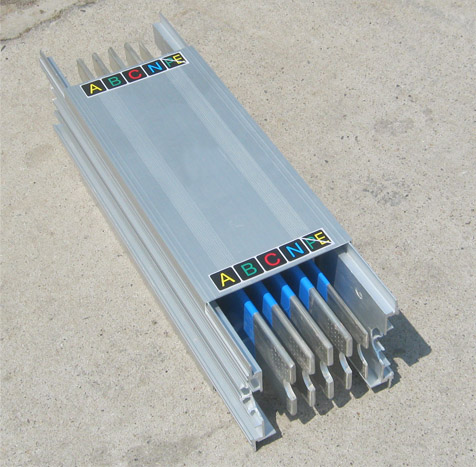
2、選擇橋架的步驟
2. Steps to choose a bridge frame
(1)確定托盤寬度、標高數、支撐的樣式和間距以及每層托盤中的電纜分布。
(1) Determine the width of the tray, the number of elevations, the style and spacing of the supports, and the distribution of cables in each layer of the tray.
(2)計算各層電纜的均布載荷(kN/m2),提前確定托盤的型號、規格。
(2) Calculate the uniformly distributed load (kN/m2) of each layer of cables and determine the model and specifications of the tray in advance.
(3)根據電纜總均布載荷值檢查托盤強度。驗算儀式如下
(3) Check the strength of the tray based on the total uniformly distributed load value of the cable. The verification ceremony is as follows
使用q=Q1 Q2
Use q=Q1 Q2
表達式中的:q1 -電纜的連續負載(每層連續負載中的大值)(kN/ M2),均布載荷是托盤、梯子或電纜槽的載荷。
In the expression: q1- the continuous load of the cable (the maximum value in each layer of continuous load) (kN/M2), and the uniformly distributed load is the load of the tray, ladder, or cable tray.
Q2 -考慮布置或維護電纜時,人的重量相同的均布載荷(kN/ M2),q2值計算,人的重量一般計算為p=90kg公斤。
Q2- When considering the layout or maintenance of cables, the uniformly distributed load (kN/M2) with the same weight of a person is calculated, and the q2 value is calculated. The weight of a person is generally calculated as p=90kg kg.
表示集中載荷和均勻載荷的彎曲距離,根據大彎曲距離相同的條件轉換: 型式為:P - 1的負載(公斤)
Representing the bending distance of concentrated load and uniform load, converted based on the same condition of large bending distance: Type: P-1 load (kg)
一個支承間距(支承間距不相等時的大值)(m)
A support spacing (the maximum value when the support spacing is not equal) (m)
Q2 - 1的等效均布載荷(kg/m)
Equivalent uniformly distributed load of Q2-1 (kg/m)
以上的精彩內容來自:濟南電纜橋架更多精彩內容請點擊我們的網站查看更多:http://m.bjxmj.com
The above exciting content comes from: Jinan Cable Tray. For more exciting content, please click on our website to view more: http://m.bjxmj.com



